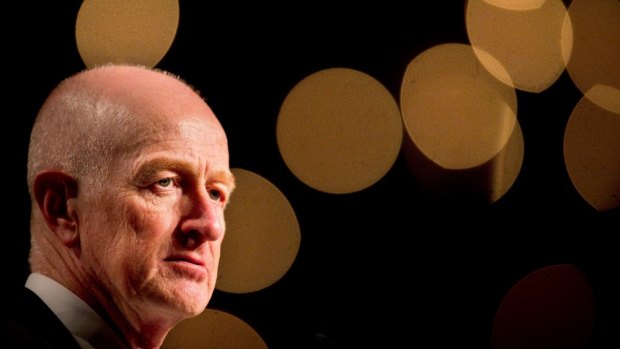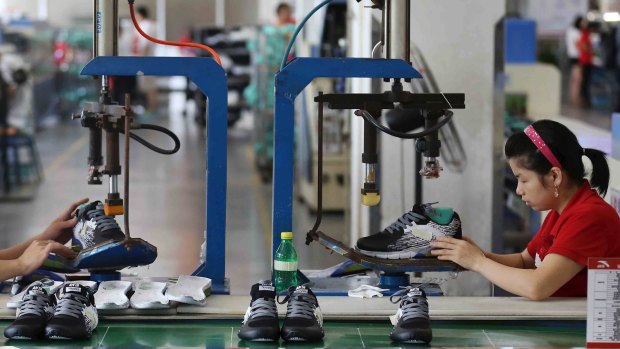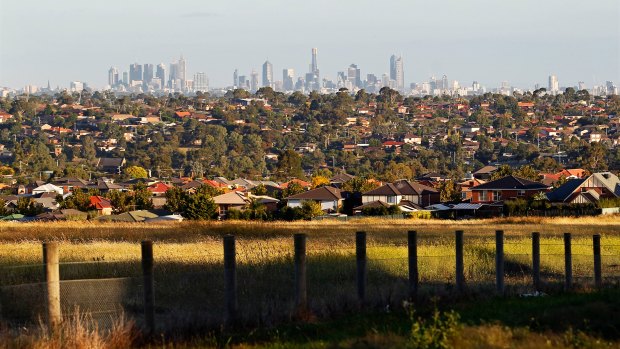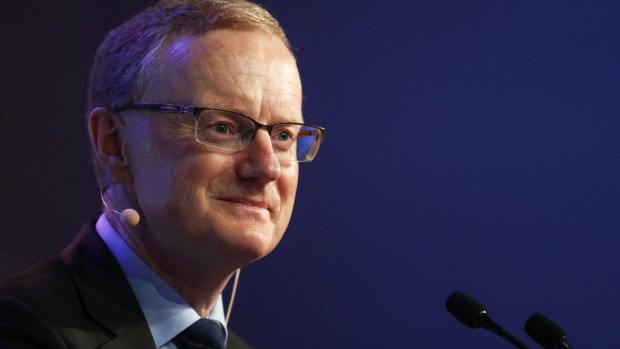- Exclusive
- Business
- The economy
- Interest rates
This was published 6 years ago
Rate rise an even-money bet as inflation gets up off the floor
By Peter Martin
At last, an end to the Reserve Bank’s two-year freeze on interest rates is in sight. But not this year, and not because of particularly high wage growth.
For the first time since rates were cut in August 2016, the BusinessDay Scope economic panel gives the RBA an even chance of lifting its cash rate by the end of the financial year. If it happens, it will come after a record 34 months of inaction. And only half of the panel thinks it will.

The bank’s cash rate has been steady since Glenn Stevens cut it to a record low of 1.5 per cent in his last meeting.Credit: Bloomberg
The bank’s cash rate has been steady since RBA governor Philip Lowe’s predecessor, Glenn Stevens, cut it to a record low of 1.5 per cent in his last meeting before handing over. In public comments, Lowe has said the next move will most likely be up, but it will depend on inflation and wage growth, which he expects to improve only gradually.
Inflation has been at or below the bottom of the bank’s 2 to 3 per cent target band since 2014. Over the year ahead, the BusinessDay panel expects it to climb to a barely respectable 2.2 per cent, with wage growth hitting 2.3 per cent for the first time since 2015. It would mean next to no growth in real wages and produce inflation still below the middle of the target band, but it could allow the RBA to justify a rate rise if it was able to point to forecasts of continuing improvements.
The BusinessDay Scope survey is Australia's longest running, comprising forecasts from 26 leading economists from the diverse fields of financial markets, industry groups, consultants, unions and academia. Over 40 years, its aggregate forecasts have usually been more accurate than those of any of its individual members. For the past 20 years, an average of its forecasts weighted for previous success has proved to be more accurate than those of the Treasury.

The IMF and OECD are concerned about China's ability to successfully complete the transition from one driven by manufacturing to consumption.Credit: AP
Growth
The panel expects modest economic growth of 2.8 per cent in 2018-19, a touch below the Treasury’s forecast of 3 per cent. Four of the panellists, Tim Reardon, Michael Blythe, Paul Bloxham and Neville Norman, expect as much as 3.2 per cent. Only one, the perennial pessimist Steve Keen, expects a dive in growth to 1 per cent.
They are optimistic about Chinese growth, US growth and world economic growth during 2018, expecting 6.7, 2.8 and 3.8 per cent respectively. But, like Treasury and international organisations including the IMF and OECD, their optimism doesn’t extend far ahead. The IMF and OECD expect world growth to turn down as the US scrambles to fund the Trump tax cuts, and they are concerned about the ability of Chinese authorities to deleverage its economy and successfully complete the transition from one driven by manufacturing to consumption.
Asked to weigh up these uncertainties and put a probability on a recession in Australia within the next two years, our panellists come up with an average answer of 21 per cent. It is a jump from the average answer of 15 per cent produced by the panel in January, suggesting it shares the concerns of international organisations. Only two of the panellists assigned a negligible probability to a recession within the next two years: the Melbourne Institute’s Guay Lim and JP Morgan’s Sally Auld.
Living standards
The panellists expect another very strong year of nominal GDP growth at 4.2 per cent on the back of high iron ore and natural gas exports and further profit growth. But they again expect the best measure of living standards, real net disposable income per capita, to grow only weakly, climbing 1 per cent.
The span of forecasts is wide because it is a difficult one to measure. At times it has gone backwards. Paul Dales and Renee Fry-McKibbin are the most optimistic, expecting 2.3 and 2.2 per cent. Westpac’s Bill Evans is the most pessimistic, expecting living standards to go backwards 0.3 per cent. Evans is a former BusinessDay forecaster of the year.
The panel expects much weaker growth in household spending than Treasury: 2.3 per cent instead of 3 per cent.
Investment
The panel expects the next decline in mining business investment to be only 4.4 per cent, the smallest in six years, suggesting the unwinding of the mining investment boom may be near complete. It expects non-mining investment to climb a further 4.6 per cent.

The panel expects housing investment to slip 1.1 per cent; a less bleak assessment than Treasury, which expects a slide of 4 per cent.Credit: Paul Rovere
It expects housing investment to slip 1.1 per cent; a less bleak assessment than Treasury, which expects a slide of 4 per cent. Reardon of the Housing Industry Association is less bleak still, expecting growth of 0.5 per cent.
Dollar
The Australian dollar will be pretty much where it is now in a year’s time in the view of the panel, at 74 US cents, but, excluding the outliers, the forecasts range from a low of 69 US cents (Stephen Koukoulas) to a high of 80 US cents (Blythe), a wider range than is usual.
Prices and wages
On balance, the panel expects a further decline in Sydney house prices of 3.9 per cent (on top of the past year’s 4.2 per cent) and a decline in Melbourne prices of 2.2 per cent. But the range of forecasts is wide, from a further decline of 12 per cent in Sydney (by Stephen Anthony, a former forecaster of the year) to a recovery of 1.5 per cent (by Bill Mitchell, also a former forecaster of the year). In Melbourne, the forecasts range from a recovery of 3.5 per cent (by Melbourne-based Norman) to a plunge of 8 per cent (by Melbourne-based Anthony).
The central inflation forecast of 2.2 per cent masks a range as wide as 1 per cent to 2.7 per cent. Five of our panel expect inflation above the middle of the RBA’s target band: Jeanine Dixon, Blythe, Saul Eslake, Sarah Hunter and Bloxham.
The "trimmed mean" of wage growth forecasts (leaving out an extreme high and an extreme low) ranges from 1.9 to 2.9 per cent, suggesting an improvement on the present 2.1 per cent. The panel is united in saying that until there is a lift in wage growth, there won’t be a lift in interest rates.

RBA governor Philip Lowe. All but three of our panel expect no move in the cash rate in the rest of 2018.Credit: Bloomberg
Rates
All but three of our panel expect no move in the cash rate in the rest of 2018. The exceptions are Mardi Dungey and Norman, who expect an early move to 1.75 per cent, and Koukoulas, who expects a cut to 1.25 per cent.
Koukoulas expects the bank to abandon its "glass half full" view of the economy when it realises that high employment growth and a historically low unemployment rate (forecast by the panel to be 5.4 per cent) are cloaking a slack labour market unable to produce much higher wage growth. Sliding house prices are likely to undermine household spending, holding back inflation.
By mid next year, 23 of our 26-person panel expect rates to climb, four of them more than once.
CBA's Blythe adds the caveat that if the royal commission prompts banks to impose tougher credit conditions, the RBA mightn’t need to lift rates until 2020, or might even need to cut them.
Su-Lin Ong of RBC Capital Markets says that at 1.5 per cent, the cash rate is a long way below the RBA’s estimate that the neutral rate is 3.5 per cent. But she says the labour market will need to surprise on the upside for the bank to be confident enough about the outlook for wages and inflation to move.
The panellists average forecast to three decimal places is for a cash rate of 1.625 per cent by June 2019, exactly halfway between the present 1.5 per cent and an increase to 1.75 per cent. It’s an even-money bet.
Peter Martin is economics editor of The Age.